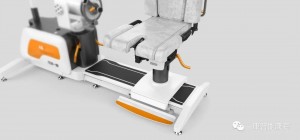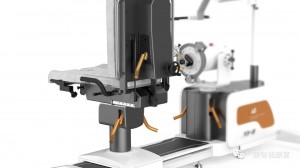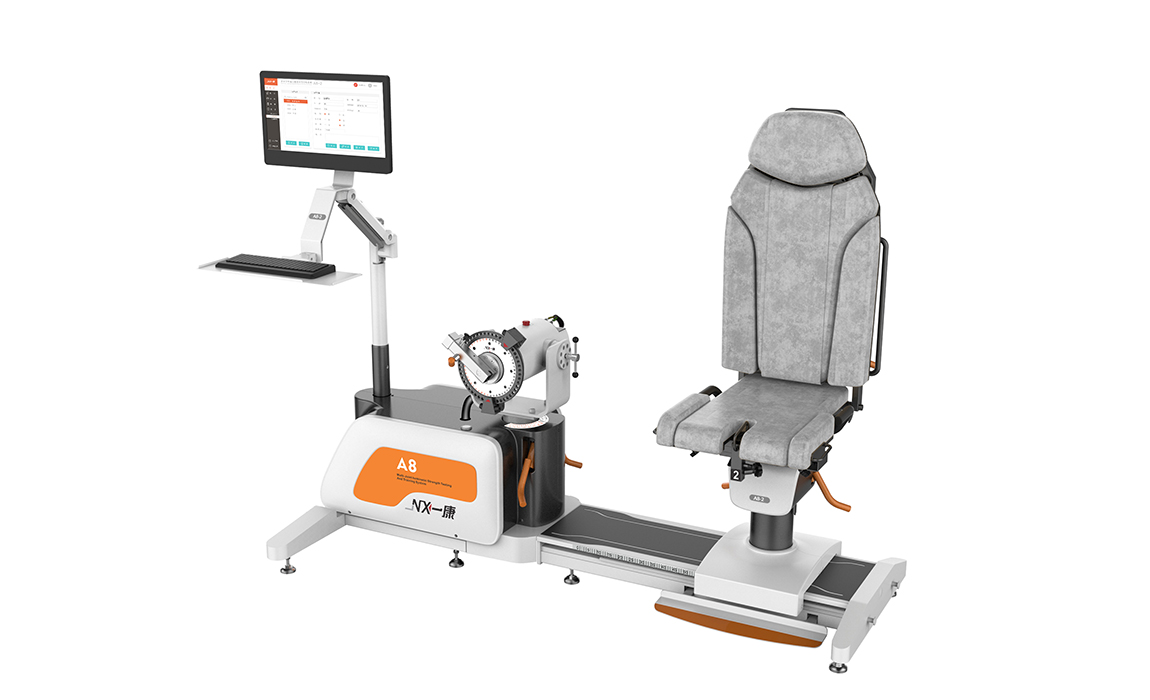PRODUCT INTRODUCTION
Multi-joint isokinetic training and testing system A8 is a evaluation and training system for the relevant programs of isokinetic, isometric, isotonic, centrifugal, centripetal and continuous passive for six major joints of human shoulder, elbow, wrist, hip, knee and ankle. It’s applicable to departments like neurology, neurosurgery, orthopedics, sports medicine and rehabilitation medicine. After testing and training, the testing or training data can be viewed, and the generated data and graphs can be printed as a report for the assessment of human functional performance or researchers’ scientific research. A variety of modes can be applied to all stages of rehabilitation to realize the rehabilitation of joints and muscles to the maximum extend.
The isokinetic force test is performed to determine the functional status of the muscles by measuring the series of parameters that reflect the muscle load when the limb performing isokinetic movement. The method is not only objective and accurate, convenient and easy, but also safe and reliable. Human body itself can not produce isokinetic movement, the limbs must be fixed to the instrument lever, and when the limb moves autonomously, the instrument’s speed limiting device will keep the limb movement speed at a constant value by adjusting the resistance of the lever to the limb based on the limb strength. Therefore, the greater the limb strength, the greater the resistance of the lever, the stronger the muscle load; and vice versa. At this point, the functional state of the muscles can be assessed by measuring a series of parameters that reflect the muscle load.
The equipment consists of a computer, a mechanical speed limiting device, a seat and accessories. It can test various parameters such as torque, optimal force exerting angle, muscle total work, etc., which can fully reflect muscle strength, muscle explosive force, endurance, joint range of motion, stability and other aspects. This method is accurate and reliable, and can provide various motion modes such as isokinetic centripetal, centrifugal, passive, etc. It is an efficient motor function evaluation and training equipment.
CLINICAL APPLICATION
It is applicable to muscle disuse atrophy caused by reduced movement or other factors, muscle atrophy caused by muscular diseases, muscle dysfunction caused by nervous lesion, muscle strength weakening caused by joint diseases or injuries, muscle dysfunction, and muscle strength training of healthy people or athletes.
CONTRAINDICATIONS
Severe local joint pain, severe limited range of motion, synovitis or exudation, joint and adjacent joint instability, fracture, severe osteoporosis, bone and joint malignancy, early period of postoperation, soft tissue scar contracture, acute swelling, acute strain or sprain.

FUNCTIONS & FEATURES
1) Precise rehabilitation evaluation and training system with multiple resistance modes. It can assess and train the six major joints of shoulder, elbow, wrist, hip, knee and ankle with 22 movement modes;
2) It can assess a variety of parameters such as peak torque, peak torque weight ratio, work, etc.;
3) Record, analyze and compare test results, set specific rehabilitation training programs and goals and record improvement;
4) Testing and training data can be viewed during and after testing and training. The generated data and graphs can be printed as a report for the assessment of human body functional performance or researchers’ scientific research tool.
5) A variety of modes can be applied to all stages of rehabilitation to realize the rehabilitation of joints and muscles to the maximum extend.
6) The training has strong pertinence and can test or train specific muscle groups.

Read more:
Application of Isokinetic Muscle Training in Stroke Rehabilitation
Why Should We Apply Isokinetic Technology in Rehabilitation?
Advantages of Isokinetic Muscle Strength Training in Shoulder Joint Treatment
Post time: Apr-18-2022







